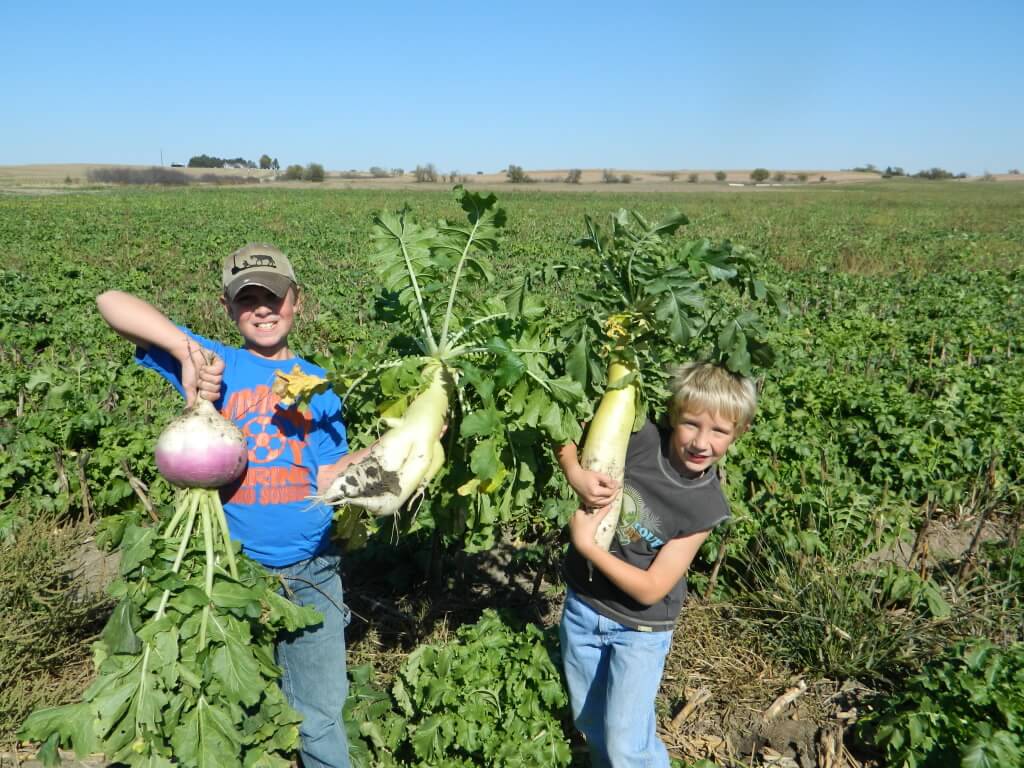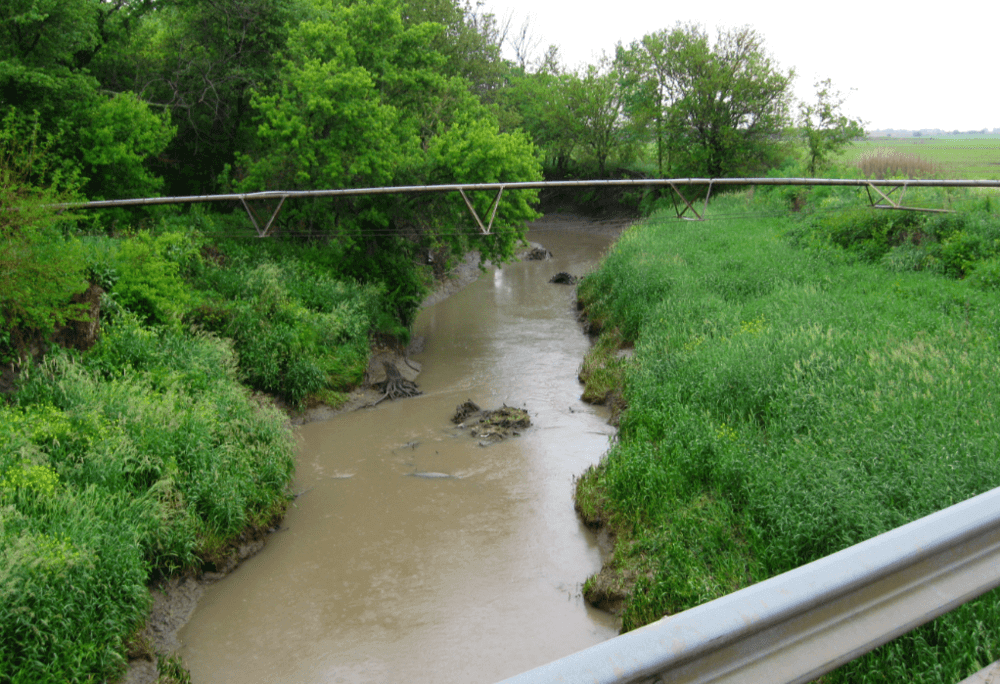Water quality issues are both complicated and widespread and because everyone of us depends on clean water for drinking, these issues are important to all of us. Cover crops can address water quality and quantity issues in many ways including:
- Reduction of water erosion and thus sedimentation and pesticide pollution by reducing the destructive impact of a raindrop hitting bare soil.
- Increased water infiltration rates into the soil through established root channels, reduced compaction, and increased soil aggregate stability.
- Reduction of wind erosion by reducing wind speed at the ground and the living roots holding the soil together.
- Reduction of nutrient runoff and leaching by taking up excess soil nutrients after a cash crop has been harvested. This is critical for areas with higher nitrogen application rates (corn) coupled with sandy soils and high water tables.
- Increased biological health and activity in the soil, including earthworms and mycorrhizal fungi populations. These organisms increase infiltration and nutrient cycling.
- Better weed suppression from cover crops reduces the intensity and the frequency of herbicide applications, which leads to less herbicide pollution in water sources.

Cover crops like radishes and turnips can be very effective in sequestering carry over nutrients, as well as holding the soil in place to prevent erosion and sedimentation pollution of our water sources.
A specific example of how soil health management techniques can improve and protect water is Nebraska’s Shell Creek Project. Shell Creek covers almost 110 miles and drains more than 300,000 acres of farmland in east-central Nebraska. Over the years, Atrazine, a common herbicide used to kill weeds, polluted the stream, impairing the aquatic life and overall health of the watershed. In 2006, the Environmental Protection Agency (EPA) designated the waters as impaired due to its high concentration.
Thanks to a comprehensive watershed management plan that employed soil saving and building techniques, such as no-till farming, cover crops and filter and buffer strips, Shell Creek’s water and aquatic life are now the healthiest they’ve been in decades. In 2018, the watershed made national history as the first stream to be delisted from the EPA’s ‘Impaired Waters’ list. This accomplishment took more than 12 years to accomplish and was a collaboration of the Shell Creek Watershed Improvement Group (SCWIG), the Lower Platte North Natural Resources District, the Nebraska Department of Environmental Quality, USDA Natural Resources Conservation Service, EPA, local agricultural producers, and other project partners.

Better water quality in Nebraska’s Shell Creek is the result of the adoption of soil health management practices by the farmers in the watershed. We can clean up our water sources!
“I grew up a quarter mile away from Shell Creek and my siblings and I spent a lot of time there,” said SCWIG co-chairman Matt Bailey. “It’s a great feeling to think that my kids will be able to see the shells I didn’t see in the creek. The stewardship of this water is the responsibility of all of us as producers and landowners. Getting it delisted is a testimony to all our efforts within SCWIG and especially those who put management practices on their own farms. They’re the reason this is becoming a reality.”
More than 240 landowners participated in the program, putting more than 340 conservation practices on the land, with an emphasis on no-till farming and cover crops. Governor Pete Rickets summed it up nicely at the delisting ceremony held near Schuyler, NE on June 15, 2018 by saying, “This is the perfect example of how Nebraskans pull together to solve our common challenges. Working together, local community leaders collaborated with state and federal agencies, and together they are accomplishing their goals of cleaning up the watershed and being good stewards of our natural resources.”
This article first appeared in the 9th Edition of Green Cover's Soil Health Resource Guide.
Also check out the 11th edition, our latest Soil Health Resource Guide, over 90 pages packed with scientific articles and fascinating stories from soil health experts, researchers, farmers, innovators, and more! All as our complimentary gift to you, a fellow soil health enthusiast!